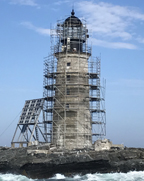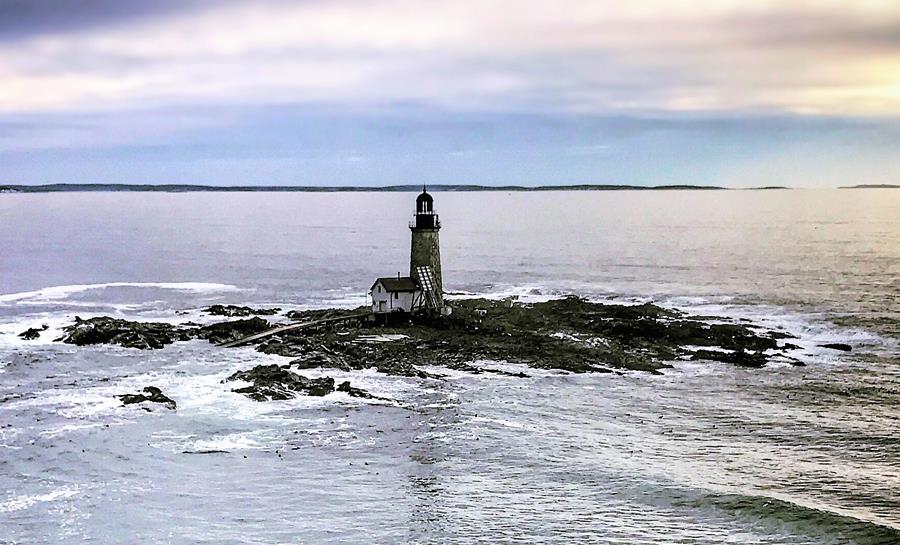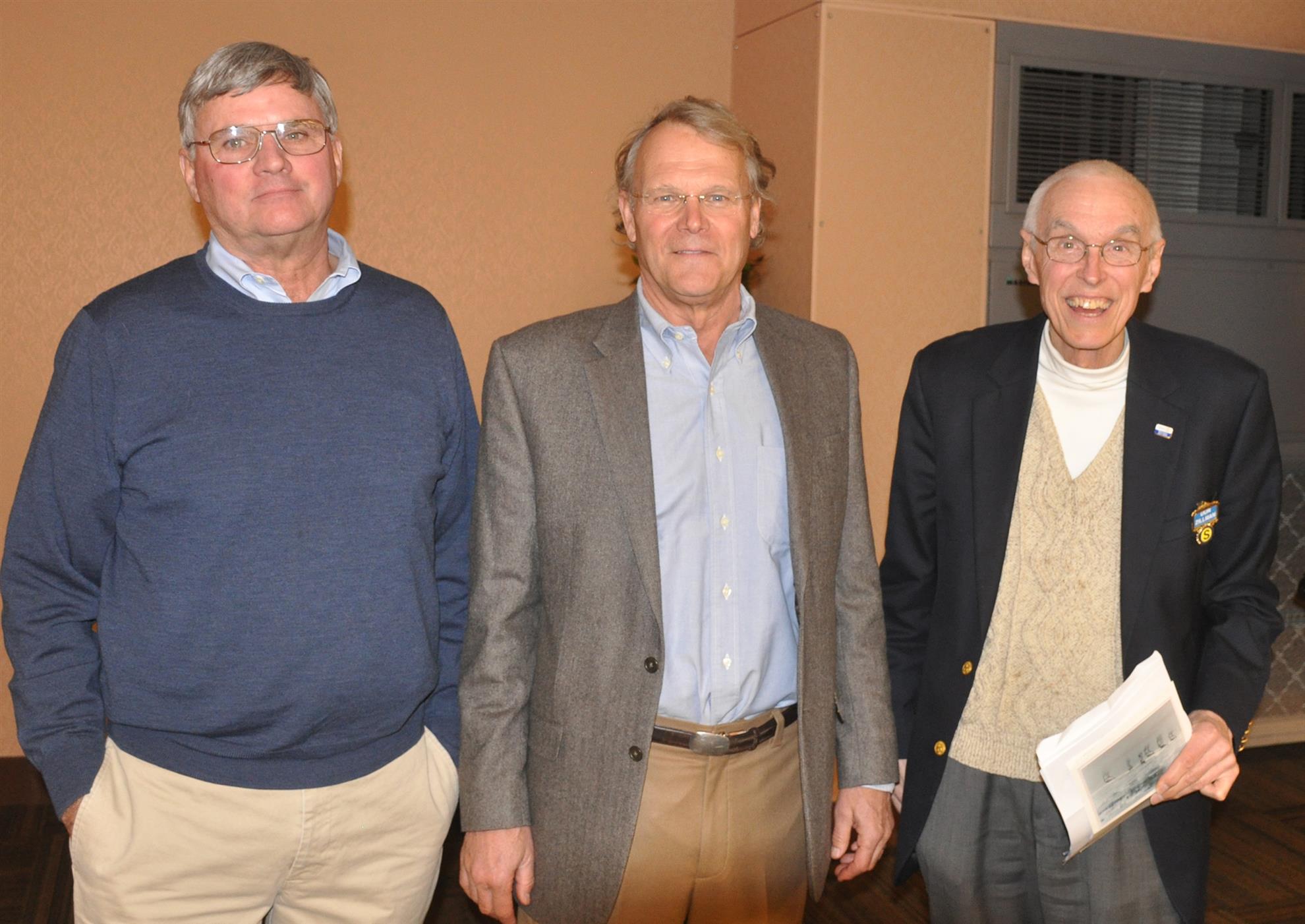Peter Noyes introduced his longtime friend and favorite brother in law, Ford Reiche. Ford’s grandfather, Howard Reiche, Sr., was a fixture of Portland Rotary for many years and also Principal of Portland High School. Additionally, Ford was also a past member of Portland Rotary and sponsored Peter’s application.
(Photo L-R: Peter Noyes, Ford Reiche and President Don Zillman.)
Ford has had an interesting professional career as a lawyer and as a businessman. Moreover, he has acquired and restored several buildings that are listed on the National Register of Historic Places. Ford presented an overview of the 3 year restoration of Half Way Rock Light Station, located on a two acre rock ledge in Casco Bay.
Lighthouses were once essential to navigation along the coast of Maine in the years before railroads became the essential to commerce; but technology and GPS have replaced their functions. Navigators followed the lighthouses into Casco Bay with the sequencing “First Monhegan, then Sequin, Halfway Rock and then you’re in.” Three people were assigned to the lighthouse, but two lived on the rock while a third would be given shore leave. It was very tough living with dreadful weather conditions. Their primary job was to keep the glass on the light clean so the beacon could shine bright during storms. They worked to keep the glass clean even during icy weather. Lighthouse keepers also kept detailed written hourly records about weather conditions. Every day of work was involved in doing maintenance and chores.
In 1975, technology allowed for automation of Halfway Rock lighthouse although a crude weather monitoring station was installed. In 2005, Halfway Rock Lighthouse Station was listed as one of the historic places in Maine most in need of restoration. Indeed, the granite structure and living quarters were devastated by erosion caused by severe weather conditions over time.
His story about the lighthouse restoration has been featured on Bill Greene’s Maine and online videos and as part of the online Building Off the Grid DIY series.
 Ford presented a slide show to demonstrate the progress of the lighthouse restoration. Achieving the goals of the restoration to be consistent with the National Historic Places requirements was a challenging and daunting process. First of all, it took him 18 months to finalize the purchase of the abandoned lighthouse due to confusion about how the paperwork for the site had been filed in Massachusetts rather than in Maine.
Ford presented a slide show to demonstrate the progress of the lighthouse restoration. Achieving the goals of the restoration to be consistent with the National Historic Places requirements was a challenging and daunting process. First of all, it took him 18 months to finalize the purchase of the abandoned lighthouse due to confusion about how the paperwork for the site had been filed in Massachusetts rather than in Maine.
Restoration must be done in compliance with the National Register of Historic Places (NRHP) meaning the paint finishing and window types must be approved. Building permits were needed but determining what town to obtain one was unclear. Eventually, Yarmouth became the town where the permits were obtained. Restoration style is consistent with how the lighthouse looked during the historic period following World War II. During the restoration, a bottle of liquor with the dated inscription “Christmas 1938”, was discovered behind one of the paneled walls.
Access to the lighthouse is dangerous. The Coast Guard uses helicopter transport to visit for light maintenance and to change the LED bulbs. Ford travels to the rock in a pea pod dinghy, during calm seas. He receives communications from people who have a personal connection with the lighthouse, including from former lighthouse keepers.
Information about Halfway Rock Light is available in Lighthouse Digest: www.lighthousedigest.com/ and with the American Lighthouse Foundation: www.lighthousefoundation.org. Ford is also composing a book. The website is www.HalfwayRock.com or contact Ford at the email Ford@FordReiche.com.

(Halfway Rock Lighthouse)
 (Halfway Rock Lighthouse)
(Halfway Rock Lighthouse)

